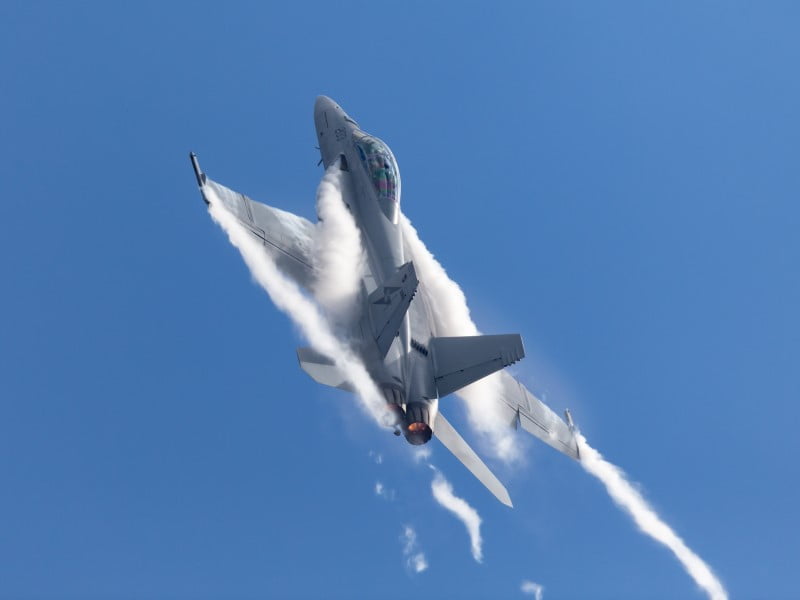From manufacturing biplanes to AI operated drones, 2022 marks the 95th anniversary US aerospace manufacturer Boeing’s operations in Australia. It has been a productive relationship, with manufacturing operations and collaborations spanning countless generations of aircraft technology.
Operations in Australia are Boeing’s largest outside of the United States. Boeing Australia has a staff of 4000 working across 38 locations in sectors including advanced manufacturing, defence, services, and research and development. Boeing’s only final assembly facility outside of North America was announced in 2021 to be located at Toowoomba to build the cutting-edge drone known as the Ghost Bat.
The firm has been headed up by former Liberal Party leader Brendan Nelson since 2020.

Boeing Australia spends around $400 million annually with 675 suppliers across Australia. The business is comprised of six operational subsidiaries which includes Aviall Australia, Boeing Aerostructures Australia, Boeing Defence Australia, Boeing Training and Professional Services Australia, Insitu Pacific, and Jeppesen Australia.
According to the United States International Trade Administration, Boeing Australia made up 38.6 per cent of the civilian aerospace market share in Australia, with Qantas and Virgin Australia operating more than 200 Boeing passenger planes.
Boeing also boasts an almost 33-year technology partnership with CSIRO, with joint investments of more than $200 million. This partnership facilitated the establishment in 2008 of Boeing research and development laboratories in Brisbane and Melbourne, which now support more than 120 advanced aerospace scientists.
In fact, CSIRO has been named Boeing’s supplier of the year across a number of categories. At the end of 2021, the partners launched a $41 million focusing on sustainability and boosting productivity using digital technologies.
In the Defence sector, the Royal Australian Airforce (RAAF) purchased and receives maintenance on 24 F/A-18F Super Hornets, 11 EA-18G Growlers, 8 C-17A Globemaster III, 2 737 Boeing Business Jets, 14 P-8A Poseidon aircraft, and 6 E-7A Wedgetails.
Boeing previously supported more than 70 F/A-18 ‘classic’ Hornets until they were retired at the end of 2021. In particular, between 1985 and 1990, 73 aircraft were assembled by Boeing heritage company Government Aircraft Factories, and sourced parts from 17 local companies.
The RAAF also became the first international customer for the Super Hornet in 2009. Further, there are 12 CH-47 Chinooks with the Australian Defence Force and a number of other defensive and support systems across the armed forces.
Notably, Boeing Australia currently leads the Royal Australian Airforce’s Loyal Wingman program with the development of six MQ-28 Ghost Bats. As Boeing’s first aircraft being developed outside the US, and the first combat aircraft designed and built in Australian in around 50 years, 70 per cent of the components come from Australian suppliers.
The Ghost Bat is an uncrewed aircraft fitted with intelligence, surveillance, and reconnaissance sensors, which successfully completed its second test flight in March 2022. This is a far cry from the propellor powered DH-82 Tiger Moth biplanes delivered to the Royal Australian Airforce in the 1930s by Boeing’s oldest subsidiary, de Havilland Australia. The Tiger Moth had a top speed of 176 km/h whereas the Ghost Bat is designed to fly alongside the F-35, which has a max speed of 1,960 km/h.
De Havilland Australia was first set up in 1927 and acquired the Commonwealth Aircraft Corporation in 1986. It was eventually acquired by Boeing in 2000 and renamed Boeing Aerostructures Australia in 2009.
In 1936, CAC began building Wirraways at Fishermans Bend, Melbourne which is still a hub for Boeing’s manufacturing activities. The Wirraway gets its name from a language of the Wurundjeri People meaning challenge.
During the second world war, subsidiaries of Boeing Australia produced more than 2000 fighter, bomber, and general-purpose military aircraft, of which 755 were Wirraways.
Further, following the Korean War now-Boeing subsidiary North American Aviation supplied the RAAF with a new frontline fighter aircraft. In Australia, 112 F-86 Sabres were built between 1954 and 1961.
Boeing’s commercial airplanes took to Australian skies in 1959 as Qantas became the company’s first international customer for the Boeing 707, which was also the firms first jet commercial airplane. The aircraft halved travel times and allowed for the first commercial jet service between England and Australia.
The Boeing 747 jumbo jets was introduced into the Qantas fleet in 1971 cutting travel time and stops required, and by 1979 was the only model in the Australian carrier’s fleet.
In 2018, Qantas used the Boeing 787 Dreamliner to begin the first non-stop scheduled passenger service between Australia and the United Kingdom. The opening of this route meant Europe and Australia were connected by a non-stop flight for the first time, although the impact of COVID-19 has halted this service.
Do you know more? Contact James Riley via Email.

